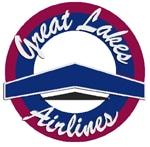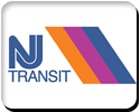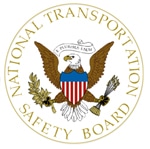SMART Transportation Division President John Previsich testified before the U.S. Senate Committee on Commerce, Science, and Transportation’s Subcommittee on Surface Transportation and Merchant Marine Infrastructure, Safety and Security Dec. 10 at the Russell Senate Office Building.
The hearing focused on the current state of intercity passenger rail in the United States, the need to invest for future growth and implications for future legislative action. It was presided over by Sen. Richard Blumenthal (D-Conn.), chairman of the subcommittee.
Previsich called on the committee and Congress as a whole to present a long-term vision for passenger rail that includes predictable, dedicated sources of funding.
“Public investment in our nation’s passenger rail system is truly an investment in our nation’s future. Passenger rail is a critical part of our national transportation infrastructure, an important driver of our national and regional economies, and is a middle-class job creator,” Previsich said.
“I can speak to this matter from personal experience. In my capacity as a union representative, I have been involved on passenger rail properties from coast to coast that have leveraged various forms of public funding to provide excellent quality service to the communities through which they operate.
“In my home state of California, I have watched Caltrain in the San Francisco Bay Area leverage a combination of local and federal funding to revitalize the service and move from a low of 5,500 boardings per day when operated by a private enterprise to the current figure of over 53,000 boardings per day.
“In my home county of Santa Cruz, Calif., a planning process is already underway to identify transit corridors that will reduce the number of daily auto trips, decrease our use of fossil fuels and promote more affordable housing. All across America, communities are relying on transit funding to invest in strategic planning that will pay back the investment many times over through job creation, community stimulus, an increased tax base and better utilization of local resources.
“It is important to note that for more than 100 years prior to the creation of Amtrak, passenger rail service was provided by private railroads. For at least 40 years prior to public funding, the private rail carriers were unable to provide passenger rail service without sustaining significant financial losses. It was because private operators were unable to continue to provide that service without sustaining huge losses that Amtrak was formed.
“Amtrak was created to save rail passenger service in America, but it must be remembered that the creation of Amtrak was also intended to save our freight rail industry from economic ruin. America’s railroads were losing $1 billion per year providing passenger service just prior to the creation of Amtrak. That is $10 billion in today’s dollars. Had Amtrak not been established, America’s rail system would have financially collapsed.
“Today, Americans support and want more passenger rail. Amtrak has set ridership records in 10 of the last 11 years and polling that our union has commissioned throughout the country shows overwhelming support for more service and increased funding for Amtrak. This is not a partisan issue – our polls show that Democrats and Republicans in red states and blue all strongly support continued and improved Amtrak service.
“Unfortunately, this comes at a time when inadequate federal funding has caused our nation’s passenger rail system to age and deteriorate. As Amtrak’s annual budget requests have established, its aging fleet needs replacing and the system needs significant renovations to tracks, bridges, tunnels and other infrastructure. Meanwhile, the rest of the world – most notably China – is investing heavily in modern and efficient passenger rail infrastructure, leaving American competitiveness, and American workers, further and further behind.
“Earlier this year, the House Transportation and Infrastructure Committee reported out the Passenger Rail Reform and Investment Act (PRRIA) of 2014. My union, as well as other rail labor unions, supported this measure and applauded the bipartisan nature of the proposal. The four-year bill does many important things that will help strengthen our national passenger rail network. However, it does not provide Amtrak with the funding levels required to meet the needs of an aging system. Most of all, it does not establish a predictable, dedicated funding source so Amtrak and our communities can adequately plan for future investments.
“The last passenger rail reauthorization – PRIIA, signed into law by President Bush in 2008 – was bipartisan and provided realistic, multi-year funding levels for Amtrak, and resisted efforts to recklessly privatize. In fact, the privatization pilot projects that were included in PRIIA received virtually no private sector interest. Permitting private companies to seize routes is a recipe for ending Amtrak service across the country and would give investors the green light to profit from assets paid for over decades by the American taxpayer and rail passengers.
“The next passenger rail reauthorization should build on the framework established by PRIIA 2008. It should include dedicated, adequate funding to upgrade and operate the Northeast Corridor and to operate the regional and long-distance trains that make up our national system.
“I want to emphasize one point. Our union is not opposed to private enterprise. The bulk of our membership works for privately held freight railroads and overall we have good relationships with those companies.
“But the facts are, Amtrak has partnered with our private freight railroads and has negotiated operating agreements with them for more than 40 years. Amtrak’s employees, many of whom are federally certified, know and understand the complex operating rules that govern freight railroads, making Amtrak the right fit to operate this vital nation-wide service.
“Reauthorization must also protect the rights, jobs and wages of workers. Labor protections provided for in PRIIA should be updated to ensure they apply to all rail workers when federal funds are used. In addition, it must ensure that there is a level playing field for all competitors and that rail workers are covered under the appropriate rail and labor statutes including the Railroad Retirement Act, the Railway Labor Act and Federal Employers’ Liability Act.
“Allowing employers, oftentimes foreign corporations, to circumvent U.S. labor laws or to undercut wages and benefits, and then claim the private sector is more efficient or profitable, is a game that must not be played. If we are serious about having a first-class rail system, it must be one that creates and sustains middle class jobs.
“Passenger rail reauthorization is an opportunity to make needed investments in a critical segment of our transportation system.
“I look forward to working with the members of this Committee on the timely passage of a bill that establishes dedicated long-term passenger rail funding, supports the jobs and rights of our skilled and dedicated rail employees, rejects unwanted and ill-advised privatization proposals and lays out a national rail policy that is integrated with America’s multi-modal transportation needs.”
 SMART Transportation Division members and their dependents insured under the Railroad Employees National Early Retirement Major Medical Benefit (ERMA) Plan (GA-46000) will have their lifetime maximum amount of coverage increased, effective Jan. 1.
SMART Transportation Division members and their dependents insured under the Railroad Employees National Early Retirement Major Medical Benefit (ERMA) Plan (GA-46000) will have their lifetime maximum amount of coverage increased, effective Jan. 1. KEARNEY — The U.S. Department of Transportation has issued an order to Great Lakes Airlines to extend its service at Kearney Regional Airport while Kearney waits for federal approval of the airline to replace Great Lakes.
KEARNEY — The U.S. Department of Transportation has issued an order to Great Lakes Airlines to extend its service at Kearney Regional Airport while Kearney waits for federal approval of the airline to replace Great Lakes. NJ Transit train conductors with a history of being less than courteous to riders will soon receive retraining.
NJ Transit train conductors with a history of being less than courteous to riders will soon receive retraining. Federal regulators who concluded that an engineer’s sleep apnea caused a deadly train derailment in New York adopted several recommendations Wednesday for better screening of such disorders, including a call for improved physician training.
Federal regulators who concluded that an engineer’s sleep apnea caused a deadly train derailment in New York adopted several recommendations Wednesday for better screening of such disorders, including a call for improved physician training.